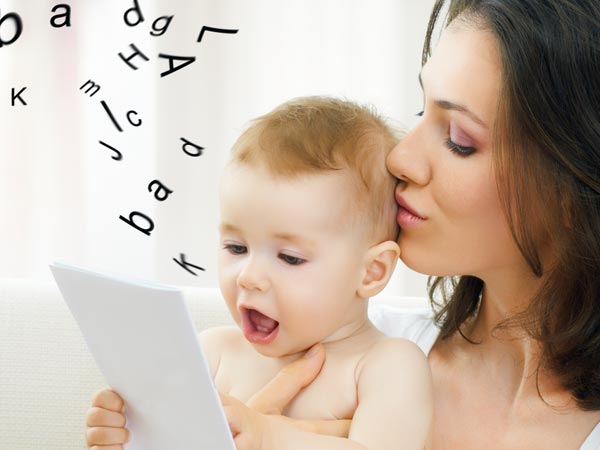How children learn language
Between birth and five years of age, the human brain is hard-wired for learning multiple languages*. After age five, this critical window begins to close and it gets much harder to acquire a new language and a good accent.*.
Infancy and early childhood is the ideal time to immerse your child in a foreign language. Babies gain understanding long before they can speak, and benefit from having a rich language environment, because babies actually learn to talk by listening.Frequent daily exposure to words and active social engagement helps the brain pathways that foster language learning to develop more fully.
“Babies and young children have incredible early learning skills and are uniquely equipped to learn the building blocks of one or more languages starting at birth,” said Dr. April Benasich, Little Pim Advisor and Director of the Infancy Studies Laboratory at the Center for Molecular & Behavioral Neuroscience, Rutgers University. “The developing brain unconsciously tracks the sounds and contours of the languages that surround them, noting the patterns and the subtle differences between sounds. This is an ideal time to introduce foreign languages to kids and to encourage cross-linguistic learning.”
Babies and young children can differentiate between the sounds of any language in the world. Babies hear their mother’s voices before birth and as newborns, they already know the rhythm of their native language. Once born, babies can actually discern differences in languages*. Babies are particularly attuned to hearing phonemes (the sound elements or building blocks of language) and repeated studies show that babies are actually more attuned to perceiving phonemes than adults.
لمن يرغب بالترجمة:
ان العقل البشري هو الثابتة السلكية لتعلم لغات متعددة بين الولادة و عمرخمس سنوات * .و بعد سن الخامسة ، وتبدأ هذه النافذة الحرجة بالإغلاق وأنه يصبح من الأصعب اكتساب لغة جديدة و لهجة جيدة.
ان مرحلة الرضاعة و الطفولة المبكرة هو الوقت المثالي لتزج طفلك بلغة أجنبية .يبدأ الأطفال اكتساب فهم اللغة قبل وقت طويل من التكلم ، ويستفيد الأطفال من وجود بيئة لغوية غنية ، وذلك لأن الأطفال يتعلمون في الواقع من خلال الاستماع للحديث والتعرض المتكرر يوميا للكلمات كما ان المشاركة الاجتماعية النشطة كذلك تساعد مسارات الدماغ في تعزز التعلم لتطوير اللغة على نحو أكمل .
” الرضع و الأطفال الصغار لديهم مهارات التعلم المبكر ومجهزة بشكل فريد لتعلم لبنات بناء واحدة أو أكثر من اللغات التي تبدأ عند الولادة “، قال الدكتور أبريل Benasich ، ليتل بيم مستشار و مدير مختبر دراسات الطفولة في مركز الجزيئية و علم الأعصاب السلوكي في جامعة روتجرز . “إن الدماغ النامية المسارات تدرك دون وعي الأصوات و ملامح اللغات التي تحيط بهم ، مشيرا إلى الأنماط و الفروق الدقيقة بين الأصوات .
كما يمكن للرضع والأطفال الصغار أن يفرقوا بين أصوات أي لغة في العالم. يسمع حديثي الولادة أصوات أمهاتهم قبل الولادة ، وهم يعرفون بالفعل إيقاع لغتهم الأم كما يتمكن الرضع وحديثي الولادة من ادراك الاختلاف بين اللغات . وأن الدراسات المتكررة تبين أن الأطفال هم متفهمين بشكل خاص لسماع الصوتيات)عناصر الصوت أو اللبنات الأساسية للغة) أكثر من البالغين .

